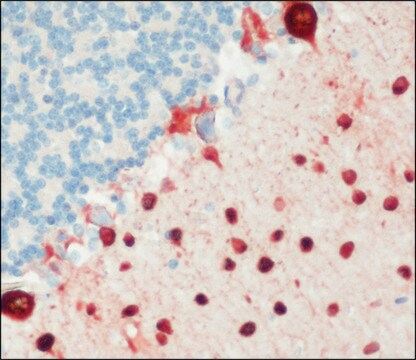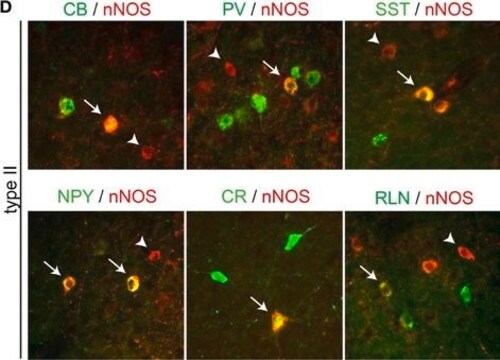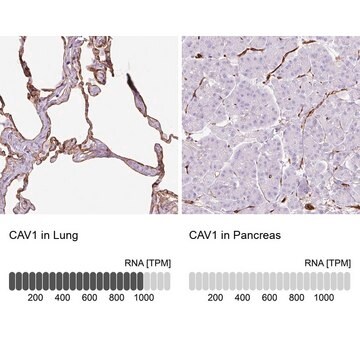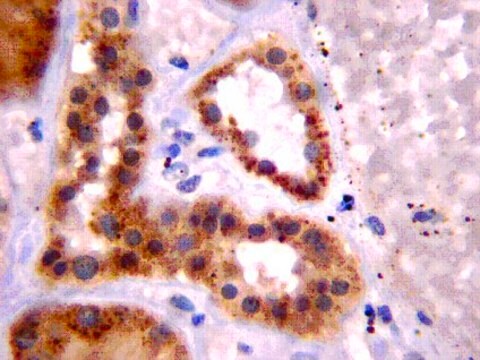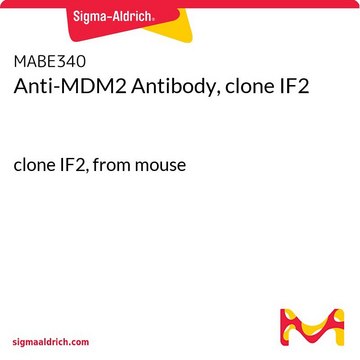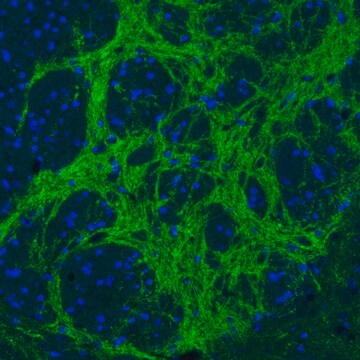MABF3148
Anti-Rabies Virus Phosphoprotein Antibody, clone M974
Sinónimos:
Protein P;Protein M1
About This Item
WB
inhibition assay
inhibition assay: suitable
western blot: suitable
Productos recomendados
origen biológico
mouse
Nivel de calidad
conjugado
unconjugated
forma del anticuerpo
purified antibody
tipo de anticuerpo
primary antibodies
clon
M974, monoclonal
mol peso
calculated mol wt 33.21 kDa
observed mol wt ~44 kDa
purificado por
using protein G
reactividad de especies
rabies virus
envase
antibody small pack of 100 μg
técnicas
ELISA: suitable
inhibition assay: suitable
western blot: suitable
isotipo
IgG2aκ
secuencia del epítopo
N-terminal half
Nº de acceso UniProt
Condiciones de envío
dry ice
modificación del objetivo postraduccional
unmodified
Descripción general
Especificidad
Inmunógeno
Aplicación
Evaluated by Western Blotting with recombinant Rabies Virus Phosphoprotein.
Western Blotting Analysis: 1: 500,000 dilution (1 ng/mL) of this antibody detected recombinant Rabies Virus Phosphoprotein.
Tested applications
Western Blotting Analysis: A representative lot detected Rabies Virus Phosphoprotein in Western Blotting applications (Nadin-Davis, S.A., et al. (2000). J Clin Microbiol. 38(4):1397-1403).
ELISA Analysis: A representative lot detected Rabies Virus Phosphoprotein in ELISA applications (Nadin-Davis, S.A., et al. (2000). J Clin Microbiol. 38(4):1397-1403).
Inhibition Assay: A representative lot of this antibody inhibited binding of Rabies virus phosphoprotein in a competitive binding assay. (Nadin-Davis, S.A. , et al. (2000). J Clin Microbiol. 38(4):1397-403).
Note: Actual optimal working dilutions must be determined by end user as specimens, and experimental conditions may vary with the end user
Forma física
Almacenamiento y estabilidad
Otras notas
Cláusula de descargo de responsabilidad
¿No encuentra el producto adecuado?
Pruebe nuestro Herramienta de selección de productos.
Código de clase de almacenamiento
12 - Non Combustible Liquids
Clase de riesgo para el agua (WGK)
WGK 2
Punto de inflamabilidad (°F)
Not applicable
Punto de inflamabilidad (°C)
Not applicable
Certificados de análisis (COA)
Busque Certificados de análisis (COA) introduciendo el número de lote del producto. Los números de lote se encuentran en la etiqueta del producto después de las palabras «Lot» o «Batch»
¿Ya tiene este producto?
Encuentre la documentación para los productos que ha comprado recientemente en la Biblioteca de documentos.
Nuestro equipo de científicos tiene experiencia en todas las áreas de investigación: Ciencias de la vida, Ciencia de los materiales, Síntesis química, Cromatografía, Analítica y muchas otras.
Póngase en contacto con el Servicio técnico